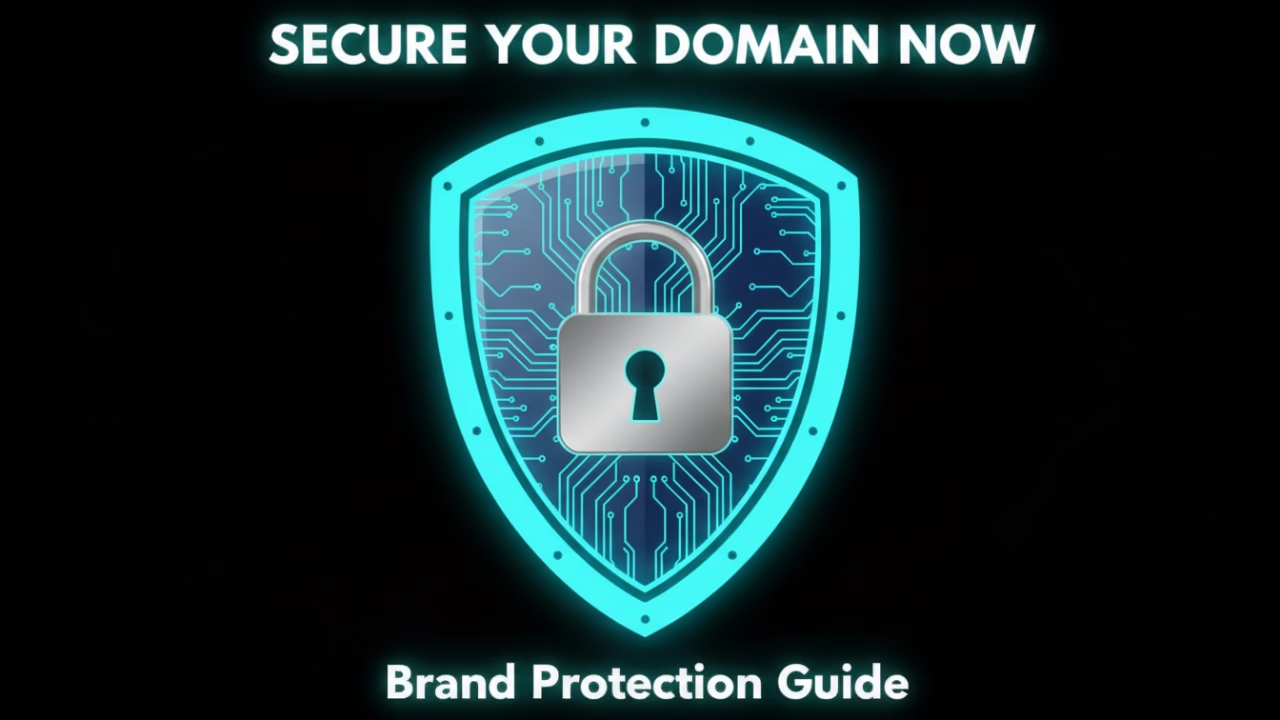In today’s digital world, your online presence is more important than ever. Securing your domain name is a crucial step in protecting your brand and ensuring customers can find (and trust) you easily. If you’re wondering how to secure a domain name, this guide walks you through the process and explains why it matters for your business.

Why Domain Security Matters
Your domain is more than an address—it’s a core piece of brand identity. A secure domain builds trust and protects you from threats like cybersquatting, phishing, and account takeover.
Build Trust with Visitors
A professional, secured domain signals legitimacy. Visible trust indicators (like HTTPS and a consistent brand domain) make visitors more comfortable taking action—subscribing, purchasing, or contacting you.
Defend Against Cyber Threats
Attackers exploit typos, look-alike domains, and weak account security. Proactive measures reduce the risk of domain hijacking, spoofed emails, and customer data theft.
How to Secure a Domain Name (Step by Step)

Step 1: Choose a Relevant, Memorable Name
Pick a domain that reflects your brand, is easy to spell, and avoids confusing numbers or special characters. If the exact .com is taken, explore trusted alternates (.io, .co, .net, relevant country TLDs) while keeping it short and clear.
Step 2: Check Availability (and Variations)
Search availability for your primary domain and close variations (plural/singular, common misspellings). Consider defensively registering these to prevent impersonation later.
Step 3: Register with a Trusted Registrar
Use an accredited registrar with strong account security, clear renewal policies, and responsive support. Enable auto-renew at checkout to prevent accidental expiry.
Step 4: Turn On Domain Privacy
Enable WHOIS privacy to mask your personal details and reduce spam or social-engineering attempts against your team.
Step 5: Lock the Domain
Activate the registrar’s domain lock (and, if offered, registry lock) to prevent unauthorized transfers or DNS tampering without extra verification.
Step 6: Secure the Website with HTTPS (SSL/TLS)
Install an SSL/TLS certificate (many hosts support free, automated certificates). This encrypts traffic and displays the padlock/“https” in the address bar.
Step 7: Enable DNSSEC (If Available)
DNSSEC adds a cryptographic signature to your DNS records to prevent spoofing and cache poisoning. Ask your registrar/host to enable it for your zone.
Step 8: Protect Your Email Domain (SPF, DKIM, DMARC)
Configure email authentication to stop spoofing and improve deliverability:
; Example DNS records (replace with your values) ; SPF - allowed senders yourdomain.com. TXT "v=spf1 include:_spf.yourmailprovider.com -all" ; DKIM - selector & key from your provider selector1._domainkey.yourdomain.com. TXT "v=DKIM1; k=rsa; p=MIIBIjANBgkq..." ; DMARC - policy, reporting _dmarc.yourdomain.com. TXT "v=DMARC1; p=quarantine; rua=mailto:dmarc@yourdomain.com; pct=100"Start with p=none to monitor, move to quarantine or reject once aligned.
Ongoing Domain Security Best Practices

Securing your domain is not “set and forget.” Keep it protected with ongoing checks and good account hygiene:
- Keep contacts current: Update registrant/admin email so you never miss renewal or security notices.
- Auto-renew + long renewals: Turn on auto-renew and consider multi-year renewal for key domains.
- Enable 2FA: Use two-factor authentication on registrar and DNS host accounts; store recovery codes safely.
- Audit DNS changes: Review DNS records and transfer locks regularly; set role-based access for your team.
- Monitor for look-alikes: Watch for typosquats (e.g., substituting characters) and consider defensive registrations for critical variants and TLDs.
- Backups & change logs: Export DNS zone files and keep a change history to speed recovery if misconfigurations happen.
Branding Benefits of a Secure Domain
- Authority: Security signals professionalism and care for user data.
- Loyalty: Trustworthy experiences drive repeat visits and referrals.
- Marketing lift: A consistent, secure domain helps ads, SEO, and email deliverability perform better.
Quick-Start Checklist
- ✅ Register main domain + key variants with an accredited registrar
- ✅ Enable WHOIS privacy and domain/registry lock
- ✅ Turn on auto-renew and verify contact email
- ✅ Install SSL/TLS and force HTTPS (consider HSTS via your host)
- ✅ Enable DNSSEC if supported by your registrar
- ✅ Set up SPF, DKIM, DMARC for email authentication
- ✅ Enforce 2FA on registrar/DNS accounts; limit user roles
- ✅ Monitor DNS changes and watch for look-alike domains
Conclusion
Securing your domain name protects your brand, boosts customer trust, and strengthens every part of your digital marketing. Follow the steps above—choose wisely, lock it down, encrypt traffic, authenticate email, and keep monitoring—to stay safe and credible online. A secure domain isn’t just tech—it’s brand reputation, safeguarded.

